Devblog #71 - Tikhvin
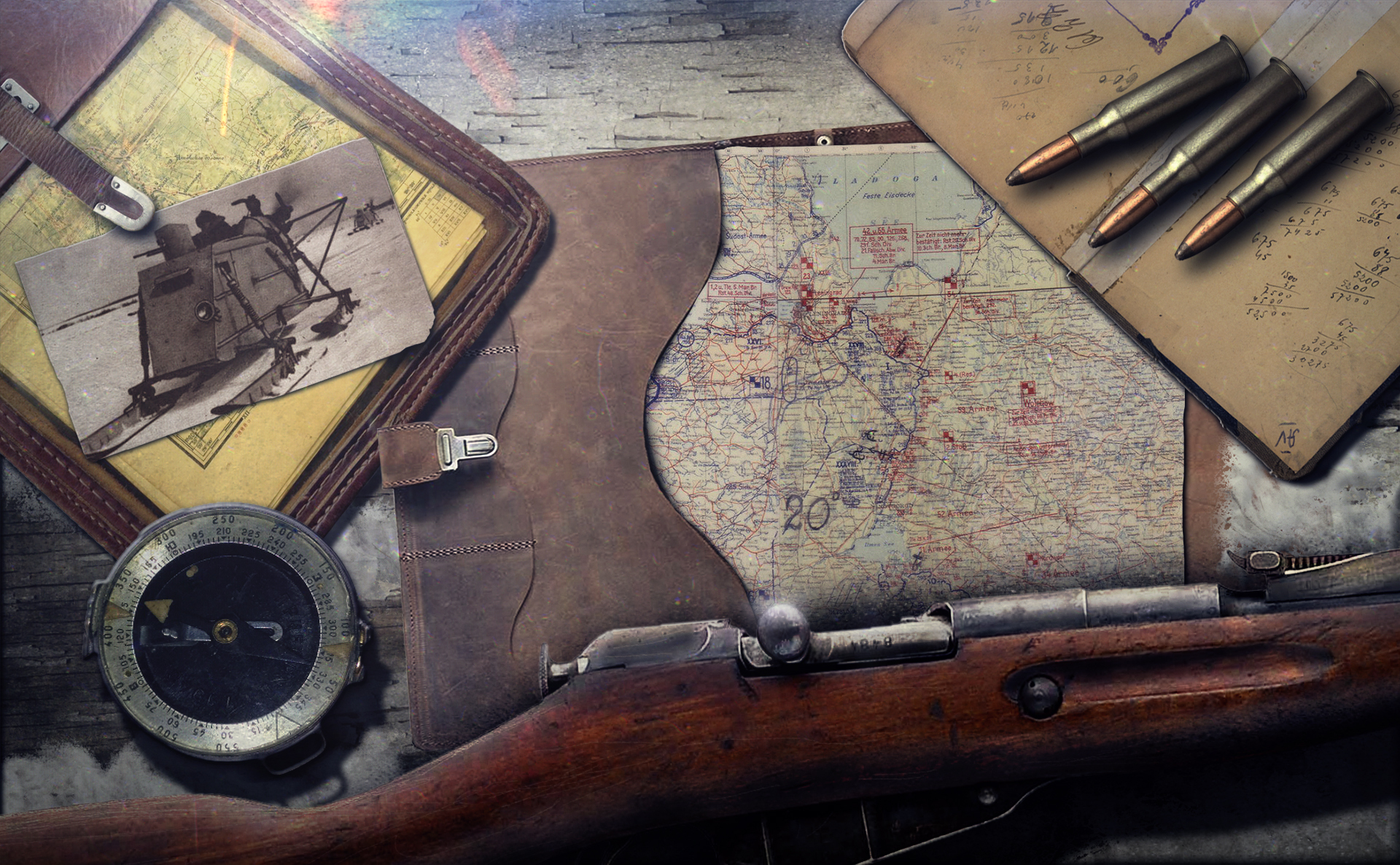 HD link
HD linkHi everyone, here we are with a development update! The last update was quite general; this time we want to present something really specific. In fact, what we want to show you is a historical scenario we’ve been working on: the battle of Tikhvin.
The Battle of Tikhvin
In October 1941, the defenses of Leningrad appear to be impenetrable to the German attackers. Instead of attacking frontally, German high command decides to concentrate its efforts against the city’s supply lines. The focal point is the railway line linking Leningrad to the eastern regions supplying the Road of Life, and the offensive will target it’s largest railway node: the town of Tikhvin. After a devastating aerial bombardment, disabling most of the infrastructure, the German forces advance on the Volkhov sector to conquer the town and cut the supply line to Leningrad.
When the Germans reach the outskirts of the town on the 8th of November a blinding snowstorm starts, slowing the attackers and concealing the enemy positions. The few Soviet guns still present in the area fire at the panzers at point blank range, and the Germans have a hard time breaking through the Soviet lines. The fighting stops when Soviet troops retreat. Afterwards, Soviet High Command organises a counter offensive with fresh reinforcements and latest version T-34s.
Because this battle was unique at the time, we felt it deserves a place in Gates of Hell. For this scenario we even built a very special vehicle; completely historical of course.
The mission

The mission starts after the German attack on Tikhvin. Soviet aero sleds are commanded to recon the area in preparation for the Soviet counterattack. The Germans are establishing logistics and defenses of their own, which makes the perfect scene for sabotage and observation operations.
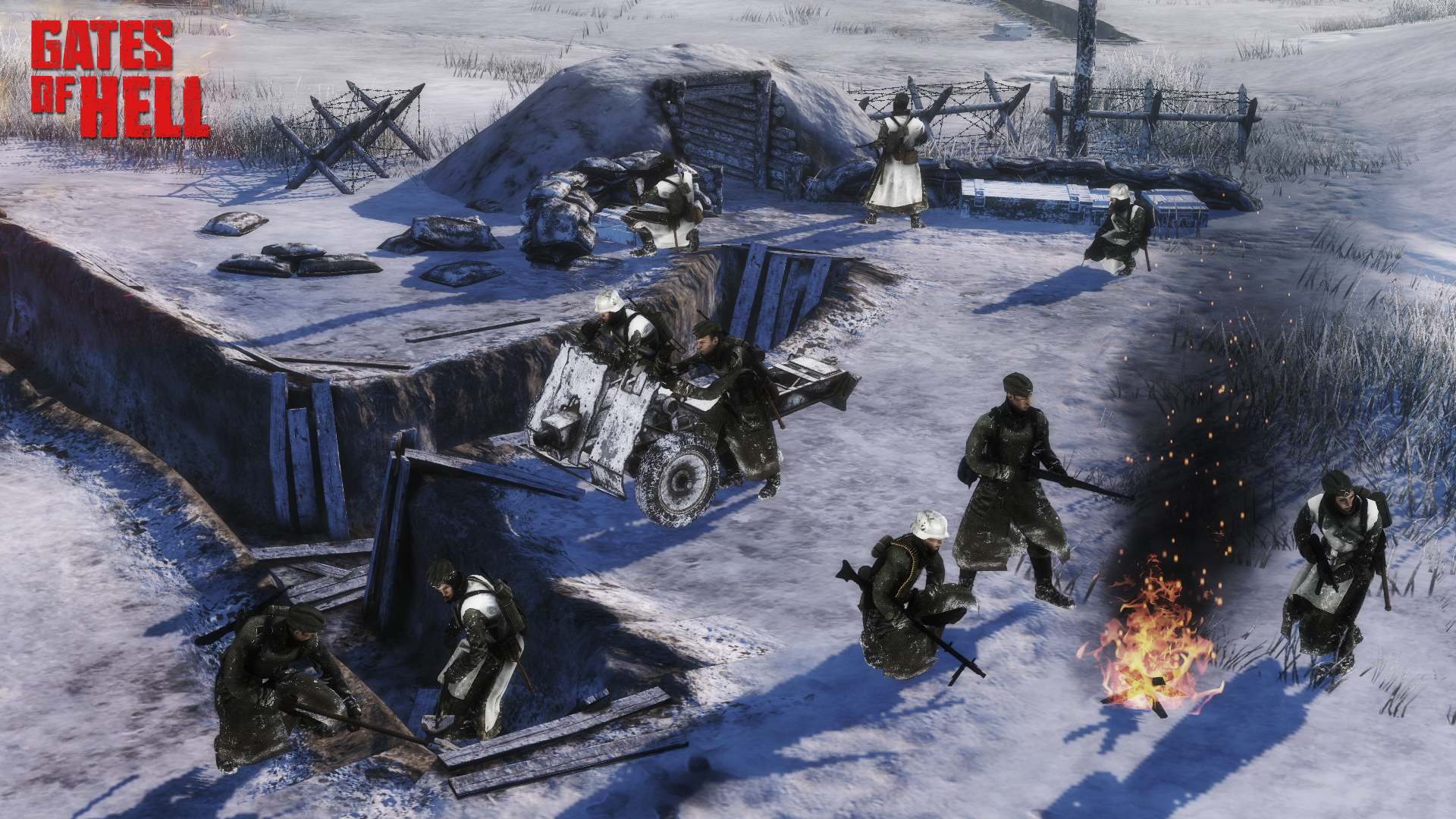 HD link
HD linkThe player [soviet] will have to fight his way through the German rear and jeopardise the supply columns and other vital strategic assets. There is room for plenty of secondary tactics to be employed, from sabotaging communication lines to denying the enemy a chance to call for reinforcements and preventing partisan executions. We have modelled the logistics and communication setups as accurately as possible.
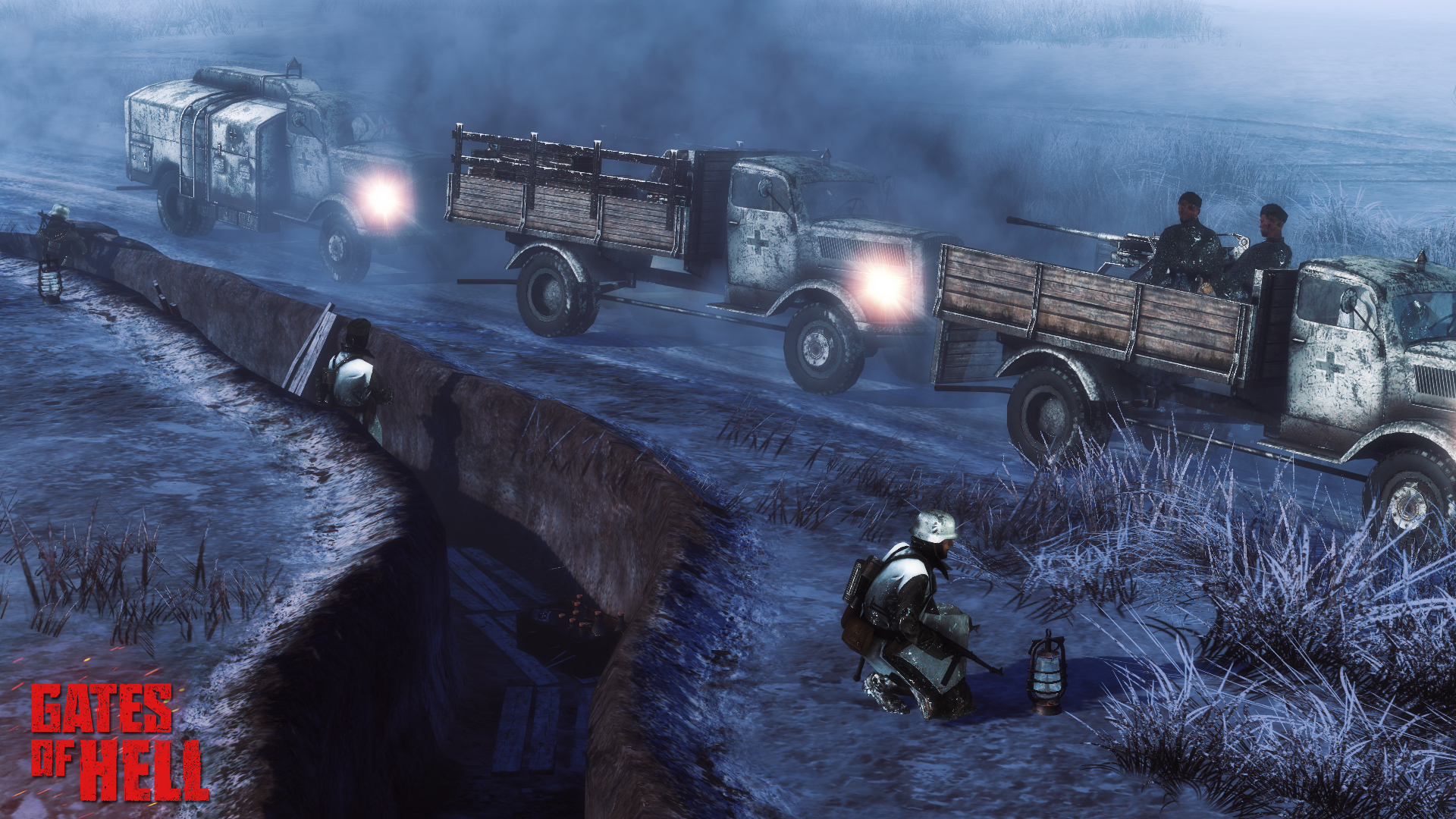 HD link
HD linkThe player will have to micro-control his small squad and keep key members alive - resembling the classic gameplay of the original games of the series. Despite the numerical inferiority, two factors are strongly in favor of the player: the element of surprise and the crucial use of NKL-26s. While the Germans struggle to cross the deep snow, your aerosleds will be speeding on the surface, and the Germans won’t know what hit them.
With this setup, we want to bring something new to the table and ensure each mission is unique and has something special and new.
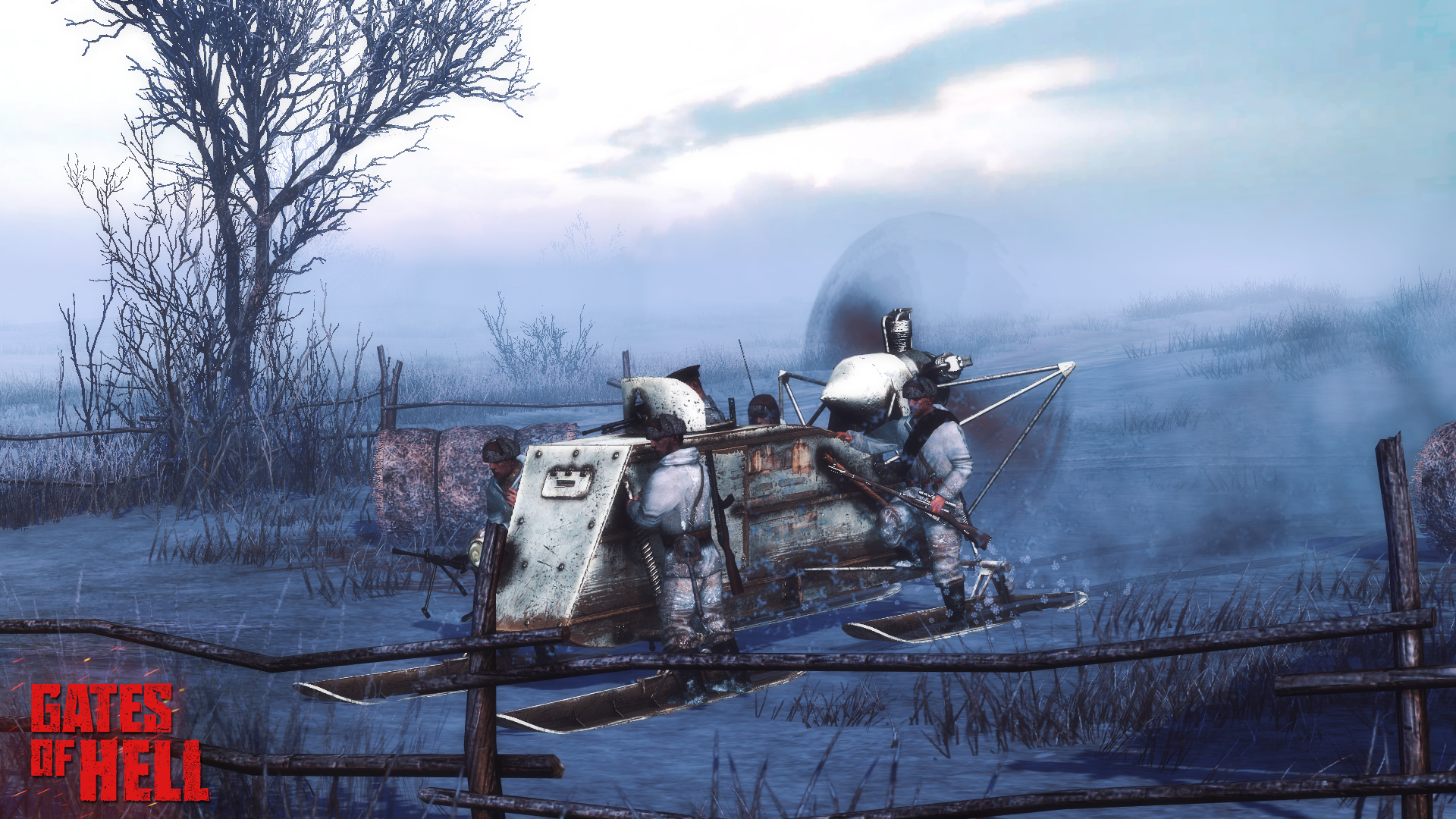 HD link
HD linkThe Soviets eventually took back the town on December 8th, making Tikhvin the first place where a Soviet counteroffensive actually repelled the Germans. In doing so, they reopened the supply line to Leningrad, albeit for a very short period of time. The Leningrad blockade was one of the most cruel events of WWII. Through our game, we wish to pay tribute to the soldiers and civilians who endured the brutal struggle. In the future we plan to develop new scenarios depicting the ‘Road of Life’ and other key events where the Soviets faced Army Group North.
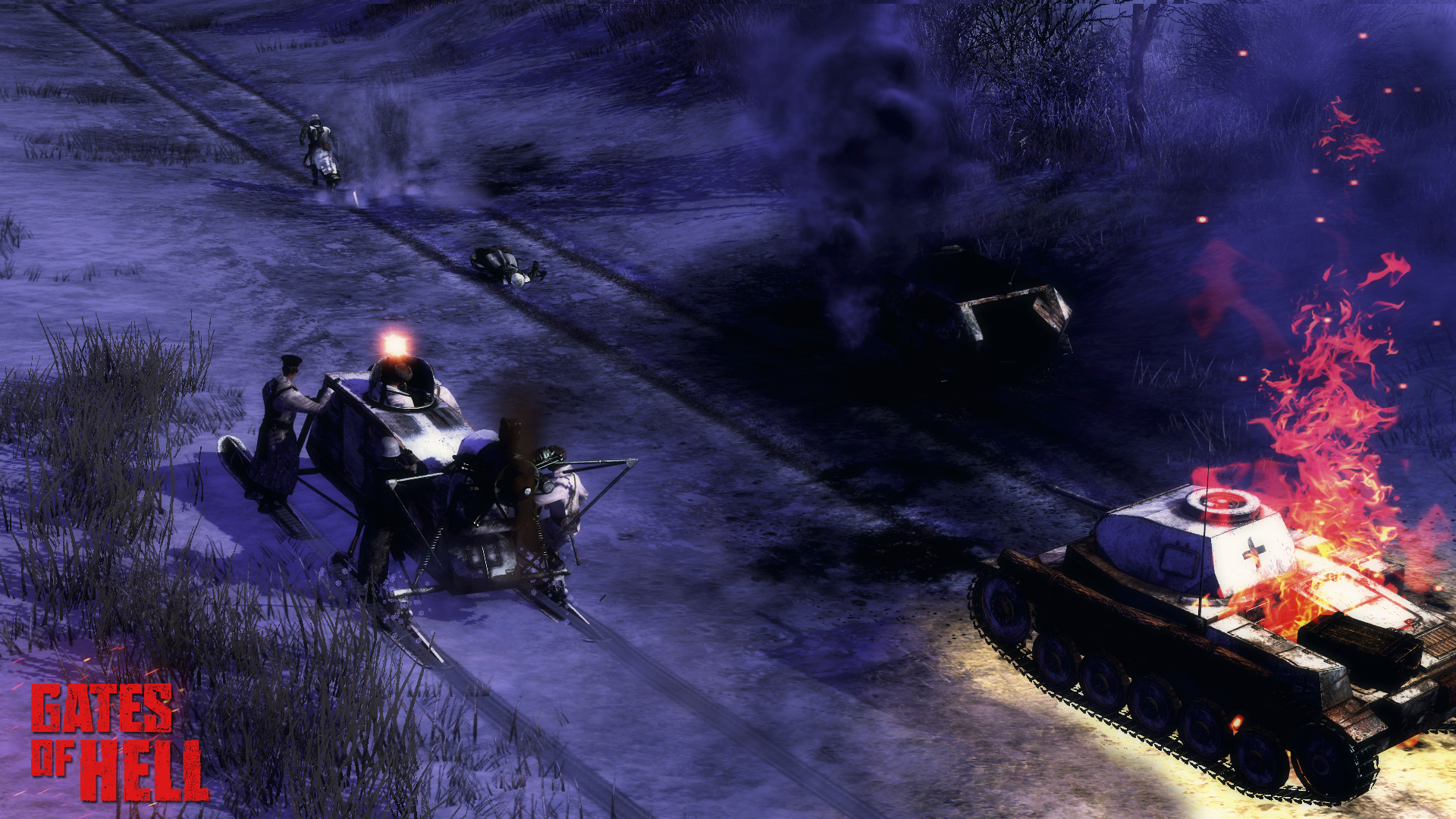 HD link
HD linkThat’s the battle of Tikhvin for now. In the background we are working on a lot more scenarios such as Mount Elbrus (check the screenshots on Facebook and VK) and the battle of Tula (around Kondrovo), and we will make sure there is a good score of scenarios when we announce the EA later this year.
Do you like what you see? Let us know!
Did you know?
- A few days after the Germans captured Tikhvin, the temperature fell off to -40°c. At this temperature, any contact with metallic objects immediately burns the skin. Because of this, both armies were forced to halt operations as men were dying of cold and most equipment was frozen.
- From the end of 1941 to February 1942 the only food available in Leningrad was a ration of 125 grams of bread per day, which contained more than 50% sawdust and other inedible materials.
- In 1942, the Soviet army tried to break the Leningrad siege for the third time. The plan was called the Sinyavino Offensive and for the first time involved major forces. The Germans had also been preparing an offensive in the same month and the same region, called Operation Nordlicht (Northern Light). They were both unaware of the enemy’s plans. This offensive also saw the first involvement of Tiger tanks, although technical failures and swampy terrain prevented them from actively taking part in the fights.